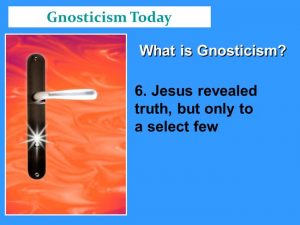Who decided what went into the Bible? Why are there only 66 books in some versions of the Bible when others have more?

This post is part of a series on the Bible
♦ 2 Reasons To Believe The Bible: Its Harmony and Accurate History
♦ Another Reason to Believe the Bible: Its Accurate Science
♦ A Further Reason to Trust the Bible: Its Accurate Translation
♦ Evidence that the Bible is Inspired by God: Fulfilled Prophecy
♦ More evidence that the Bible is Inspired by God: Its Miraculous Protection
♦ Why the Bible is worth reading today: Its Relevance and Supernatural Impact
♦ What is in the Bible and Why?
♦ The Books Not in the Bible : The Apocrypha and Gnostic writings – This post
This is because some branches of Christianity accept more books as being worthy of inclusion in the Bible than other branches. These extra books are called the Apocrypha.
What is the Apocrypha?
The term Apocrypha refers to any collection of writings that falls outside the Canon of Scripture.
[For an explanation of what the Canon of Scripture is, and how it was arrived at, see Part 7 of this series – What is in the Bible and Why.
Errors in their teachings
The word Apocrypha was also applied to writings that were rejected by the church, because of their doubtful, even heretical teaching.
Some branches of the Christian church accepted the books and included them in their version of the Bible. But other branches rejected them.
Between the Old and New Testaments
If the Bible were a library with shelves, the “Bible Library” of those who accept the Apocrypha would contain a small bookcase between the Old Testament and the New Testament.
- The Old testament took 1,100 years to be written.
- The New testament was written over 60 years or so.
- There was a space between these two testaments of about 400 years
During this inter-testamental (between the testaments) period, the books of the Biblical Apocrypha were written.
Why are these books not included in the Canon of Scripture?
Because the books of the Apocrypha are not inspired by God
The chief reason that the Apocryphal books were rejected from the Canon Bible is that they are not inspired by God. There are 6 reasons why we know the Apocrypha was not divinely inspired.
1. None of the Apocrypha writers claims to be inspired by God.
The apocryphal books themselves make reference to what we call the “Silent” 400 years, when there was no prophet of God to write inspired materials. The writers of these apocryphal books even stated themselves that they were writing at a time when there was no direct revelation from God.
2. The New Testament Jews never included them in any Jewish collection of Scriptures.
Firstly, because the Apocryphal books were written in Greek, and not in the Hebrew of the Old Testament.
But secondly, because they didn’t regard these books as divinely inspired. Later, the Jewish historian Josephus expressed this view, which was common at the time of Jesus.
3. The literary style of the Apocrypha is regarded as poor.
Scholars regard it as being very different from the style of the Biblical Hebrew Old Testament writings. Experts say that the language is stiff and lacks the originality and beauty associated with the Old Testament books.
4. Unlike the Old Testament, the Apocrypha was never validated or quoted by Christ.
He often quoted from the Psalms, the Pentateuch and the Prophets – but never from the Apocrypha.
5. The Apocrypha contains a great variety of errors – historical, geographical, chronological, and moral.
- These books describe Jeremiah and Baruch as being in Babylon when the Bible says they were in Egypt.
- They give one man, Tobit, a life span of 158 years, but place him at events 210 years apart.
- They teach that suicide is a noble and manful act
- They teach that magic potions can drive away demons.
6. The Apocrypha promotes doctrines which contradicts the Bible. For example:
- They teach that prayers of the living can bring salvation for the dead
- They say giving to the needy can atone for sin
- They claim that humans can reach a stage of sinless perfection
- They teach that women are less than men and should be dominated by men
We can only thank God for the wise and Spirit-filled early churchmen, who were guided to preserve the truth and keep it free from error. Like them, Paul says we need to “Test everything. Hold on to the good” (1 Thessalonians 5:21)
The Gnostic Writings
The term “apocrypha” does not only apply to those books which are between the Old and New Testaments. There is another group of books, written after the New Testament was completed, that carry that title.
They are called the Gnostic gospels or sometimes the New Testament Apocrypha.
The word Gnostic comes from the Greek gnosis, which means knowledge. The Gnostics wanted to keep their “knowledge” to themselves.

Hidden mysteries
The Gnostics wanted to keep their teachings secret for several reasons.
They said that the knowledge they had was:
- too deep and mystical to make it widely available
- too hard for ordinary people to understand
- too sacred to be given just to anybody, other than those specially initiated into the mysteries contained in the books.
Doctrinal Divisions
By the end of the first century of Christianity, two main divisions had developed.
Firstly, there were the apostolic Christians. These were true Christians who followed the teachings of Christ and the apostles. Secondly there were the Gnostics.
The apostolic Christians accepted as divinely inspired the books we now have in the Bible.
The Gnostics held a totally different view of the Bible, of Jesus Christ, of salvation, and of virtually every other major Christian doctrine.
However, they did not have any writings by apostles to validate their beliefs. So they wrote the Gnostic gospels.
The Gnostics fraudulently attached the names of famous Christians to their writings, such as “the gospel of Thomas”, “the gospel of Philip”, “the gospel of Mary”, etc.
All these books and other Gnostic volumes are generally referred to as the New Testament Apocrypha.
These books were totally rejected by the early church and have continued to be rejected by Bible-believing Christians, because the Gnostic gospels contradict the Bible with their false teachings.
Gnosticism today
Gnosticism has a lot of appeal for many today. Gnosticism is similar to New Age teaching, which is itself a pervading influence in society.
Both New Age teachings and Gnosticism are based on an approach to “truth” which is mystical and based on our own thoughts and feelings— certainly not on any authority outside ourselves. This is rebellion against God.
Gnosticism is becoming more popular
One apocryphal book is the Gospel of Thomas, which is becoming popular again as there is a rise in the heresy of Gnosticism. The Gospel of Judas, a Gnostic gospel, also received much media attention when it was reconstructed in 2006.
There are famous “easy-to-read” authors who support Gnosticism

Dan Brown, in his novel The da Vinci Code, put into print what he believes. Among other Gnostic heresies, this book speaks about Mary Magdalene marrying Jesus Christ.
Elaine Pagels, a professor of religion who specialises in studies of the Gnostics, has written several popular books which attempt to destroy the beliefs of orthodox Christians.
Her easy-to-read style and persuasive arguments have made her very popular among non-specialists and academics alike.
Madonna and Britney Spears are just two of those who have been attracted by the mysticism of the ancient Jewish Kabbalah, itself heavily influenced by Gnosticism.
Meanwhile Keanu Reeves‘ all-action blockbuster movie series, The Matrix, is, its devotees have argued in exhaustive detail, a Gnostic parable about finding a perfect world away from earth.”
– From The secret world of the new Gnostics by Peter Stanford (The Independent).
We are with Paul on this one. Speaking to Timothy and warning him against the Gnostic heresies he said:
“By making such profession some have erred (missed the mark) as regards the faith.” (1Tim 6:20)
Would you like to share this teaching on the Apocrypha and Gnosticism? Our free PowerPoint explores the origins of Gnosticism, and how it is now pervading secular and church culture today. Most importantly, the presentation demonstrates the Bible’s answers to the Gnostic beliefs.
What do Gnostics believe?
Briefly, here are 6 teaching of Gnosticism that contradict the Bible:
- Gnosticism says : The physical world—anything that is material—is evil and should be shunned.
The Bible contradicts this and says that when God made the material world he declared that all his creation was good (Gen.1:31) - Gnosticism says : The God of the Bible is a lower, imperfect god, who should never have come into being and is the cause of all evil.
The Bible contradicts this. God is perfect and good. Evil and sin came into the world through rebellion against God (Gen.3) - Gnosticism says : The Absolute Supreme Being is unknowable
The Bible contradicts this. Jesus said that when we know him, we can know God (John 14:9). Solomon was encouraged to know God more intimately. (1 Chron. 28:9) - Gnosticism says: Jesus could not be God in flesh, because all physical matter is evil.
The Bible contradicts this, referring to Christ: God was manifest in the flesh, preached on…believed on and received into glory” (1 Tim. 3:16). - Gnosticism says : Salvation (escape from the material world) is achieved through intellectual, mystical knowledge (“gnosis”).
The Bible contradicts this: Salvation is only through faith in the redemptive work of Christ (Acts 4:12) - Gnosticism says : Jesus is a mystic who revealed truth to only a few who were deep enough to understand.
The Bible contradicts this: Jesus is the Redeemer for all (John 3:16).
Jesus died for all!
The Bible teaches that salvation is not just for a special few, initiated into some mystical knowledge. Salvation through Christ is for everyone who repents and puts their trust in him!
Gnostics were active during the New Testament period
Paul spoke in 1 Tim 6:20 against the heresy:
“O Timothy, guard and keep the deposit entrusted [to you]! Turn away from…the subtleties and the contradictions in what is falsely called knowledge and spiritual illumination.”
[1 Tim. 6:20 Amplified Bible]
The Greek words for knowledge and illumination used here by Paul were ones the Gnostics had taken from Christian doctrine and twisted to suit their own beliefs.
Gnostics are active today
We, too, need to guard God’s Word, in that we should treasure and act upon what God is saying to us personally, through His Word. We should not let the devil rob us of any blessing by being lackadaisical about the Word of God. Studying it, believing it, and acting upon it are how we know the truth and stay free from error.
If we read the Bible regularly, and trust the Holy Spirit to teach us, we need not be afraid of falling into error. God will guide us into all truth.
A free-to-download PowerPoint teaching
We have prepared a PowerPoint which gives a way of clearly showing the context of the biblical apocrypha and the Gnostic writings. It explains the reasons behind the rejection of these writings by main-stream evangelicals today. It is free for you to download now!

To download the files for this presentation, right-click on the links below and save to your own computer.


Totally disagree with so many points here. 2 Timothy 3:16, All Scripture is God-breathed and is useful for teaching, rebuking, correcting and training in righteousness. The reason it is rejected is because it goes against the main stream agenda and does not promote the Christian ideology. If this was a “true” religion, so many attrociaties would not have been comitted in gods name. More pagan (those outside the Abrahmic faiths) deaths have been linked to the Christian belief than most wars in history. History does not lie nor is it forgotten. Keep in mind it is written by the Victors.
Thank you, Andy, for taking the time to comment.
You will understand that we will have to disagree with you about the Apocrypha, for all the reasons stated in the post above.
The matter of which religion has been responsible for most deaths is beyond the scope of this post. Historians of all faiths and none have debated this.
Thanks again for your interest and comment, but we must agree to disagree.
This… Is deeper than I thought. Thank you for the explanation, but where does the book of enoch fall? Into the 400 year space? Is there a list of the non-canon books somewhere?
Hi Tim. It seems there are several writings that are attributed to an author (or authors) taking the name Enoch.
Various sources consider that the First book of Enoch was written in the 400 year gap.
Here is one –
“Historians put the book of Enoch’s composition date sometime between 300 and 200 B.C. This places it as being written between the Old and New Testaments” (The KJV Study Bible, Barbour Publishing 2011).
Regarding a list of non-canonical books, here is a web page with that information.
Hello, can we read the Gnostic or “New Testament Apocrypha” as a means of knowledge about what was happening before Christ? For example, the gospel of Mary. Or should we totally reject everything that these New Testament and Old Testament Apocrypha says?
Lisa, as our post above on the Gnostic writings and Apocrypha explains, these books are not reliable sources of history or spiritual teaching. In fact, they are perversions of truth.
One Bible teacher once spoke about the huge value of “filling our minds with God’s thoughts”. We can do no better than reading the canon of Scripture.
Regarding the 400 year “silent period”, for further study we can benefit from using reliable and trust-worthy sources. Here is one – a video of R C Sproul teaching on the inter-testamental period, and as he explains, its importance in history and culture, as the groundwork for the New Testament to be written.
Why do you have references to what the bible says, but you don’t for what Gnostics says? Could you please give references?
Hi Andrew. Thank you for your very understandable question.
The reason we don’t give references from the apocryphal and gnostic writings is that our aim for this post, and in preparing the free PowerPoint presentation of the teaching, is to give a general overview of the common deviations from truth by these writers. With the limited time available to us, we have chosen not to go into detailed gnostic references.
Our post is not an academic paper, rather a general guideline to the dangers of gnosticism.
We have gathered our information from several reliable sources – Christian organisations and sound biblical scholars who have researched and know Gnosticism well. We are confident that our remarks are well-founded.
By concentrating on the Bible verses, we are giving readers grounding for the truth.
Here are links to some helpful and biblically sound websites websites and their comments on Gnosticism.
For Further Reading
The Christian Institute
ReasonsForJesus.com
Grand Canyon University
Christianity.com
BibleTools.org
Reasons.org
It is interesting to note that most writers we have researched, some of whom are noted academics, do not give particular references to gnostic writings. They prefer to simply state the common trends and beliefs among the gnostics, and then contrast them with Bible truth.
Thank you again, Andrew, for your thought-provoking question.